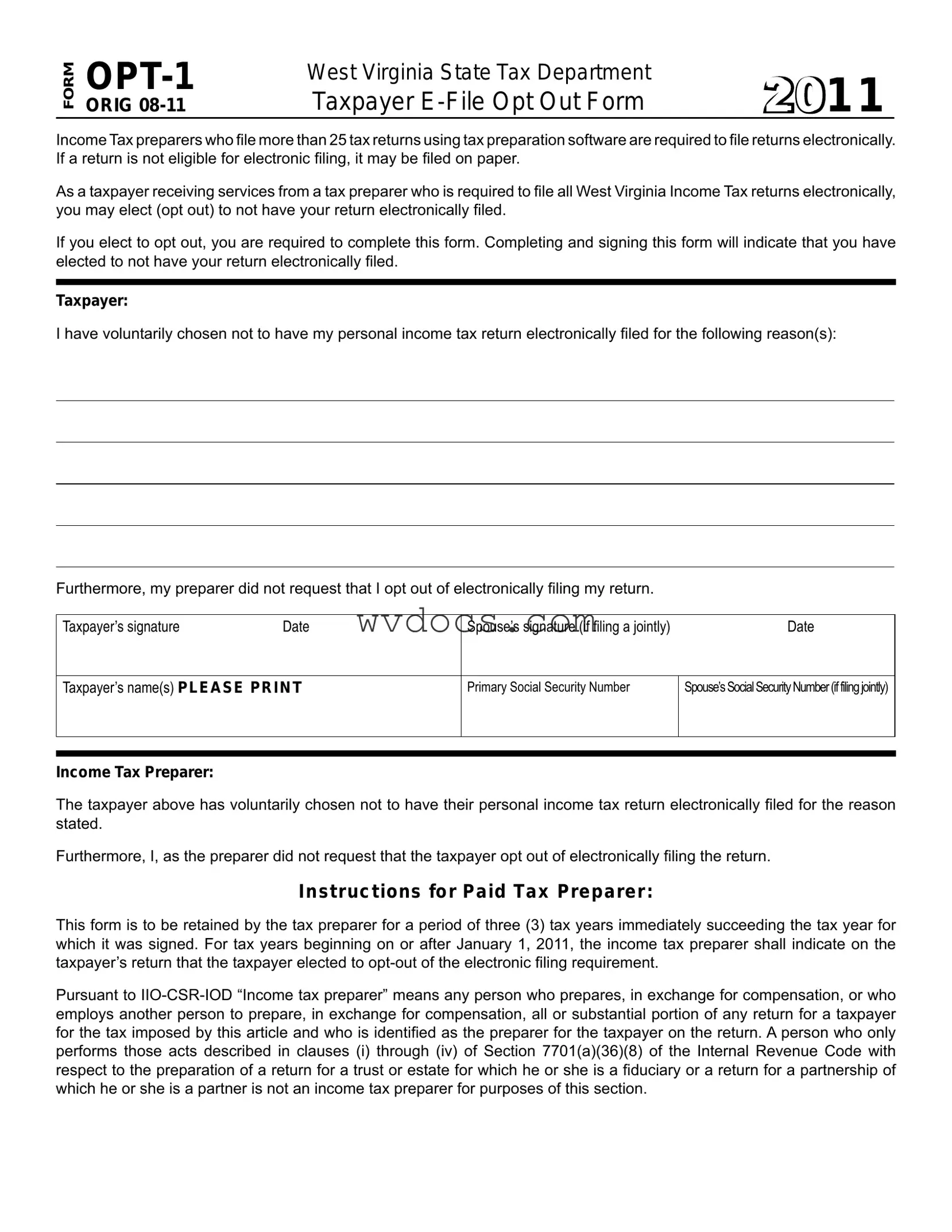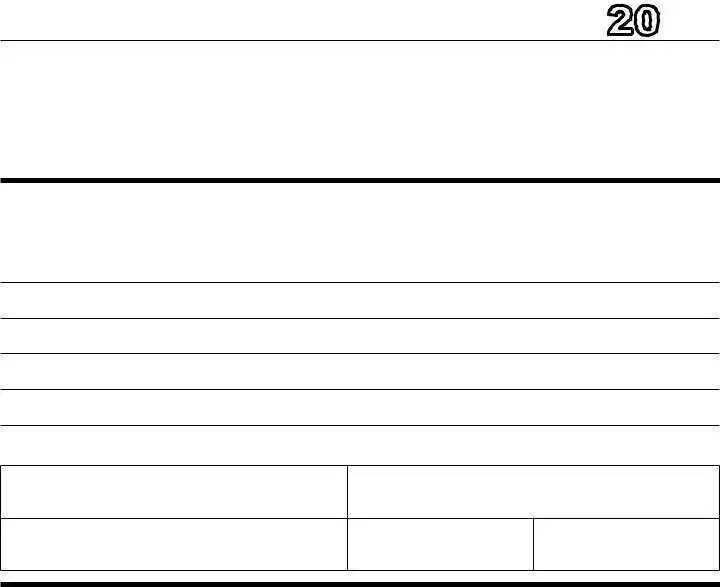The West Virginia Opt 1 form shares similarities with the IRS Form 8948, which is used to indicate that a taxpayer has opted out of e-filing. Both forms serve the purpose of allowing taxpayers to choose a paper filing option instead of electronic submission. This choice is particularly relevant when taxpayers feel uncomfortable with electronic filing or when their returns do not meet the criteria for e-filing. Just like the Opt 1 form, IRS Form 8948 requires signatures from both the taxpayer and the tax preparer, affirming that the decision to opt out was made voluntarily and without coercion.
Another document that resembles the West Virginia Opt 1 form is the State of California Form 8453, which is used for e-filing purposes. This form allows taxpayers to affirm their choice to file a paper return after e-filing their federal tax return. Similar to the Opt 1 form, it ensures that the taxpayer's decision is documented and signed, providing a clear record for both the taxpayer and the tax preparer. Both forms emphasize the importance of maintaining compliance with state regulations while allowing personal preferences to guide filing methods.
The New York State Form IT-201, which is the resident income tax return, also shares features with the West Virginia Opt 1 form. While IT-201 is primarily for filing purposes, it includes sections where taxpayers can indicate their preferences regarding electronic submission. Both forms require taxpayers to provide personal information and signatures, ensuring that their choices are formally recorded. This commonality highlights the importance of taxpayer autonomy in the filing process across different states.
Similar to the Opt 1 form, the Florida Form DR-501 is used by taxpayers to opt out of electronic filing. This form allows individuals to choose to submit their returns on paper if they prefer not to e-file. Both forms require clear communication of the taxpayer's wishes and the reason for opting out, reinforcing the need for transparency in the filing process. The signatures from both the taxpayer and the preparer serve as a safeguard against misunderstandings regarding filing preferences.
The Illinois Form IL-1040 also has a parallel structure to the West Virginia Opt 1 form. Taxpayers in Illinois can use this form to indicate their preference for paper filing over electronic submission. Like the Opt 1 form, it requires essential taxpayer information and the signatures of both parties involved. This similarity underscores the importance of documenting taxpayer choices in a manner that is compliant with state tax regulations, ensuring that both the taxpayer's rights and the preparer's responsibilities are clearly defined.
When considering the various forms used for tax filings across different states, it's important to note how these documents cater to the preferences of the taxpayer. For instance, the West Virginia Opt 1 form allows individuals to choose paper filing over electronic submission, a sentiment echoed in the New York ATV Bill of Sale form, which provides a reliable method for documenting vehicle transactions. As you explore options for ensuring compliance and maintaining thorough records, resources such as smarttemplates.net can offer valuable templates and guidelines tailored to your needs.
Additionally, the Texas Form 1040-EZ provides a simplified option for taxpayers who wish to file their returns on paper. This form allows taxpayers to indicate their choice not to e-file, similar to the West Virginia Opt 1 form. Both documents require the taxpayer's personal information and signatures to confirm the decision. This shared feature emphasizes the importance of taxpayer agency in choosing how they wish to file their returns, regardless of the state in which they reside.
Finally, the Pennsylvania Form 40 is another document that parallels the West Virginia Opt 1 form. This form allows taxpayers to opt out of electronic filing, providing a paper filing option instead. Both forms require signatures from the taxpayer and the preparer, ensuring that the decision to opt out is clearly communicated and documented. This commonality reflects a broader trend in state tax systems to accommodate taxpayer preferences while maintaining compliance with filing requirements.

